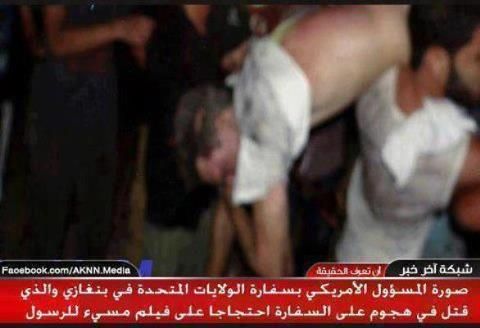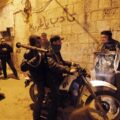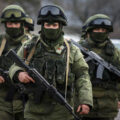 A blind man in the dark with ear muffs on knows that something happened in Benghazi, Libya more than a spontaneous angry mob pissed off over a Grade Z video attacked an American Consulate and killed the US Ambassador to Libya.
A blind man in the dark with ear muffs on knows that something happened in Benghazi, Libya more than a spontaneous angry mob pissed off over a Grade Z video attacked an American Consulate and killed the US Ambassador to Libya.
I hate internet conspiracy theories, and loathe slinging a new one into the mix, but the evidence available adds up one way: the attack, well-planned, was surgical payback for CIA activity in the area. Stevens wasn’t the target at all, he was just a celebrity in the wrong place at the wrong time. The guff about the dumb Prophet movie was the first cover story for the US Government and when that fell apart like cardboard in the rain, the State Department shifted the meme to flag waving over Stevens’ death.
Let’s see what we know:
– The attack was not spontaneous. It involved a large number of men, perhaps as many as 125, fighting in a coordinated fashion, using weapons such as RPGs and mortars on multiple targets. Yes, yes, lots of people carry guns around Libya, but not RPGs and certainly not crew served weapons like mortars. It appears also that the so-called Libyan security forces assigned to protect the Consulate either conveniently disappeared on cue or saw the smack coming down and ran to save themselves. This information is widely available from media outside the US, but scare in US media sources for some reason.
– The attack did not target Stevens. Indeed, famously, his body was only pulled from the ruins of the Consulate by a secondary crowd. Whether the crowd abused the body or dragged it to a hospital, it clearly had no idea or concern for who it held. The Consulate attackers went for documents, and ignored the Ambassador. Stevens just happened to be there, wrong place, wrong time.
– Half the US personnel evacuated out of Benghazi were CIA. While it is common knowledge that the CIA stations personnel abroad, it seems very unusual to have half a mission’s complement to be Agency. The New York Times reports that though the Agency has been cooperating with the new post-Qaddafi Libyan intelligence service, the size of the CIA’s presence in Benghazi apparently surprised some Libyan leaders. The deputy prime minister, Mustafa Abushagour, was quoted in The Wall Street Journal last week saying that he learned about some of the delicate American operations in Benghazi only after the attack on the mission, in large part because a surprisingly large number of Americans showed up at the Benghazi airport to be evacuated.
– In its reporting on the large number of CIA personnel in Benghazi, the New York Times agreed to withhold locations and details of Agency operations at the request of Obama administration officials, who said that disclosing such information could jeopardize future sensitive government activities and put at risk American personnel working in dangerous settings.
– The UK’s Independent noted that the Consulate attackers made off with documents listing names of Libyans who were working with Americans, and documents related to oil contracts. This strongly suggests the attack itself may have been a diversion to steal these documents and the Ambassador’s death, in U.S. terms, merely collateral damage. The organized attacking mob did not seem to be primarily interested in looting or stealing computer stuff.
– Many wondered why the media was reporting from early on the deaths of four Americans at the Benghazi Consulate, while Clinton continuously only mentioned two (Ambassador Stevens and computer person Sean Smith). Well, that’s because she did not want to tell us that the other two who lost their lives were “former” Navy SEALS now acting as State Department “contractors.” Even when Clinton finally acknowledged the SEALS’ deaths following widespread press reports, she only mentioned that one’s role was as security for the Ambassador.
Clinton pointedly did not mention what the other SEAL was doing in Libya. That is because the other deceased man was in Libya on an intel mission. The SEAL told ABC News that he was in Libya in the field tracking down and blowing up MANPADS, shoulder-fired surface-to-air missiles. The US saw its way to allowing those weapons to be used against Qaddafi and now wants to take them back so they are not used against us. Such ops are not State Department work and fall cleanly into CIA territory.
– The State Department’s curious mix up over who was providing security at the Benghazi Consulate also may point toward other US government Agencies. State Department spokeswoman Victoria Nuland initially said “at no time did we contract with a private security firm in Libya,” while federal procurement records easily Googleable showed a contract for “security guards and patrol services” on May 3 for $387,413.68. An extension option brought the tab for protecting the consulate to $783,000. The contract lists only “foreign security awardees” as its recipient. Was typically fastidious Nuland’s wrong answer simply because she was misbriefed, or was it in fact an honest answer, that the guards were not State Department contractors at all?
According to Danger Room, the State Department frequently hires security companies to protect diplomats in conflict zones. It usually is done through what’s known as the Worldwide Protective Services contract, in which a handful of approved firms compete to safeguard specific diplomatic installations.
In 2010, State selected eight firms for the most recent contract. Blue Mountain wasn’t among them, and the State Department did not explain why the Benghazi consulate contract did not go to one of those eight firms. How the State Department could have even hired a foreign firm outside that blanket contract is unclear. State’s Inspector General had criticized State’s management of personnel security firms, so unilaterally expanding the pool just for one Libyan Consulate seems off base.
– The US government has had a heck of a time getting its story straight over what happened in Benghazi, most famously in sending UN ambassador and attack dog Susan Rice around to claim the attack was purely spontaneous even as the White House backed away from the idea. We’ve already mentioned Clinton’s duplicity over the identities and roles of the two deceased American “ex-” SEALS. Even long-time State drone Patrick Kennedy, Under-Secretary at the State Department, said at one point he was convinced the assault was planned due to its extensive nature and the proliferation of weapons.
BuzzFeed sums up by saying:
The election-year focus on President Barack Obama meant that the White House had at first been catching most of the heat for the tragedy in Benghazi. It’s certainly true the explanations from White House spokesman Jay Carney and UN Ambassador Susan Rice have strained common sense — mainly, the idea that the attack could be blamed solely on an anti-Islamic video, and that there was a protest outside the consulate at 10 p.m. (there reportedly wasn’t,) among other misleading details. That initial story has crumbled, and it took Robert Gibbs to get the Obama administration back on message on the Sunday shows.
State’s later calling reporter Michael Hastings an “asshole” and telling him to “fuck off” in relation to CNN’s use of Ambassador Steven’s found diary just adds fuel to the make-it-up-as-you-go-along nature of all this.
– Of course, there is a sort of precedent for this, most famously in 1991 when the KGB used a fire in the US Embassy in Moscow as a cover to roam around the building collecting documents,
Look, if all you have to do is tell the truth, it is pretty easy. Making up a cover story on the fly requires revisions. It may not be in our lifetimes that we learn what really happened in Libya, but something more than just a protest gone wild did happen.
via WeMeantWell





